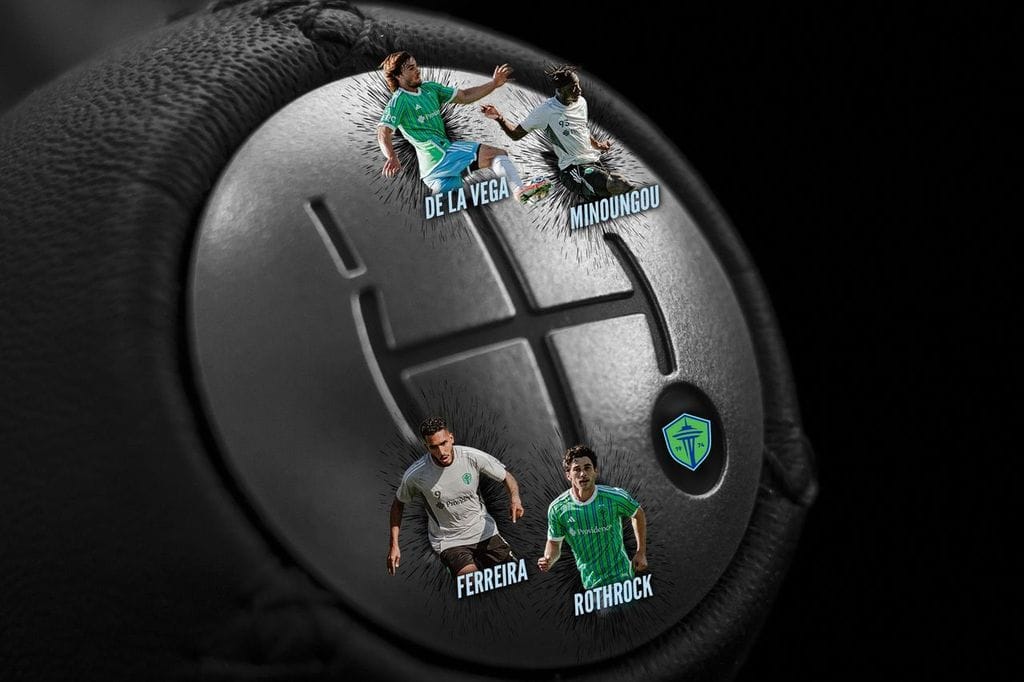Frustrating as it was to watch, there does appear to have been a plan that contributed to the Seattle Sounders effectively sitting out the summer transfer window for a third straight year. If we can cut through an underlying message that most were understandably underwhelmed by, what Sounders General Manager Craig Waibel presented was an idea that the remaining salary-cap flexibility was better used by securing the roster’s long-term potential than by making marginal short-term upgrades.
I think that’s a defensible position. There are enough young and talented players on this team that you can see the logic.
But where this gets tricky is how the Sounders go about surrounding them with talent and what they do when some of those players inevitably leave.
The Sounders appear to be carving out an interesting place in the MLS hierarchy. If it wasn’t already obvious before, this last window showed without a doubt that they don’t currently see themselves as one of the more aggressive clubs when it comes to the transfer market. In fact, they might actually be one of the least aggressive clubs. Only one other team failed to make a move this summer and only three others failed to sign at least one player.
At the same time, Seattle's history of success has created a fanbase that has much, much higher expectations. Ever since the Sounders entered MLS, they’ve made it clear that they define themselves by winning trophies. It should not surprise anyone at Longacres that fans are frustrated when the front office’s actions don’t match those standards.
While the jury is still out on Pedro de la Vega’s eventual impact, the last truly impactful player the Sounders signed from outside the organization was probably Albert Rusnák when he joined as a free agent head of the 2022 season. The last time the Sounders made a genuine splash during the transfer window may be all the way back in the winter of 2020, when they added both João Paulo and Yeimar Goméz Andrade. That was nine transfer windows ago, an eternity in world soccer, but especially in MLS where many teams have gone complete overhauls in that time.
To remain competitive, the Sounders don’t need to go dollar-for-dollar with the league’s top teams. Even a club like LAFC isn’t necessarily breaking the bank as their net spend is roughly on par with the Sounders’ when you consider the income they’ve created by outgoing transfers. The main difference between the Sounders and the top teams is the relative stasis of the roster.
The current roster includes just six players for whom the Sounders ever paid any transfer fee, and just a few others for whom they gave up any assets at all. The vast majority of players either joined through free agency or came through the academy. There are just nine players on the team who have joined the team since Waibel took over as GM in late 2022, and only Paul Rothrock has played as many as 1,000 minutes across all competitions this season. While it’s a testament to the foundation Waibel inherited that the Sounders have remained competitive during this time, without a much, much more productive academy this is not sustainable.
That situation is not fully Waibel’s fault, but it is primarily his responsibility to address. Simply put, the Sounders front office needs to start rebuilding both the roster and goodwill, and it needs to start with the next transfer window.
That means the Sounders will need to get much more aggressive about not just bringing players in but potentially moving them along as well. That might mean trading popular players, not re-signing club legends, or transferring them abroad just as they are becoming productive.
Even accounting for various raises and new contracts — and before any potential trades or transfers — the Sounders could end up with nearly $2 million in salary-cap space to spend on the 2025 roster. That’s more than enough to make at least two impact signings, while still leaving some room for a summer signing.
Here’s how I suspect the Sounders roster will shape up in the coming weeks and months:










